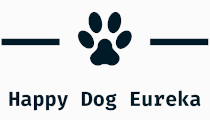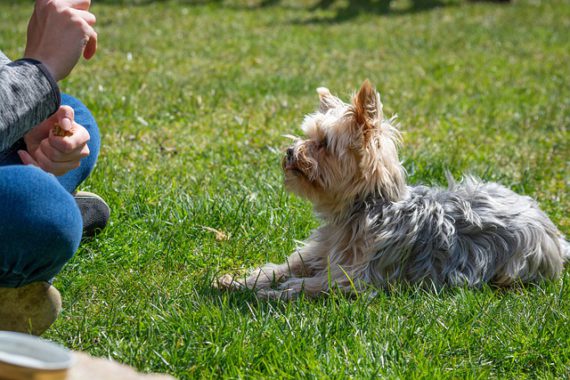Education is not intuitive for everyone. It is not linear either. However, when it comes to animal-friendly education, there are basics to know. Would you like to know the 3 secrets of positive education? These rules will make a difference.

1 Be in a good mood!
And yes, the first rule when talking about positive education is to be in a good emotion, a good state of mind. Dogs are real emotional sponges. They perceive our moods without difficulty, and that influences their behaviour, one way or another.
Remember that teacher who was under the blow of his bad mood putting you under stress! Remember the state of mind you were in! Did that make you learn faster? I don’t think so. I’m not saying you weren’t learning, but it made it stressful and therefore less easy.
Another example. You’re in a maze with a friend. At the beginning of the game, you are both in a good mood. And then he gets a not-so-friendly phone call from his boss. The mood is changing. Your friend is more nervous, you will naturally be a little more nervous evenly. You’re modeling yourself on him. Now, if every time you make the decision of the way to go, you are wrong and your friend passes you a blower. You may no longer have fun at all, you will be wary not to suffer his bad mood, you may even be afraid to propose a path, and see strongly want to respond in a more or less sympathetic way …
It is in this state of mind that your dog will meet for learning, if you are not yourself in a good day, or you can not make a let go of your emotions in order to educate your dog. If necessary, take a break to relax, because even then your dog is watching you and seeing you serene… it will be too!
In addition, to be a good teacher, you must be able to be in a good mood, be in a quiet place and know how to put aside your worries so as not to put the student through it. So you have to be patient and consistent.

2 The perfect owner and dog does not exist
Yes, you read that right! Gone is the “everyone must be perfect” myth. Owning a dog is not always easy. You only have to live with them, sometimes you can see it. It also means that you, like him, have the right to make mistakes.
So you have to be tolerant of yourself and your dog in order to put you both in a position of success. Be an observer, so you can always do better next time. To allow yourself to make the mistake is to remove a huge weight from the shoulders, and therefore be less demanding, or in a more tolerant and understandable way with your dog. It’s all about moderation.
If you can do it, the bonds will be even stronger! You will have a stronger connection with your dog, so the atmosphere will be serene within your home.
Keep in mind that you should not be too demanding towards you or your dog. The more pressure you put on yourself, the more you will pass it on to your dog. A stressed dog is a dog that cannot learn, learn badly, or will always be afraid to propose a new behavior. If you don’t have to be too demanding, that doesn’t mean you have to forget your consistency.
3 Consistency and limits
Consistency between your requests, actions and authorizations is very important. You should not, for example, allow your dog to bed, and overnight punish him, shout or bring him down because he has dirty paws. You can’t tell him to lie down doing the same thing as sitting down. Do not speak to him in an authoritarian way while you congratulate him. Or you can’t ask him to sit in a crowded public place, if your dog hasn’t generalized his learning or if he’s phobic. Don’t say “wait” and then change your word and say “don’t move!” when you want to ask for the same thing.
Finally, positive education is not permissive education, as some people think. Not! We are well aware that we must teach rules to an animal that shares our human life. Simply, these will be taught to him in different ways. So, no, your dog shouldn’t do what he wants away from it. Positive education is a philosophy, which allows to be taken into account in mutual respect, in the cooperation and encouragement of the being that is educated: human, dog, cat, horses, ferret…
It is to reinforce good behaviors, rather than punish bad ones, so that the dog has confidence in himself and us, to face later situations that he might find difficult. Choosing a non-violent framework does not mean that punishment does not exist. When your dog jumps on you, ignoring it completely is a first punishment. If it continues, social isolation is also a punishment. So, no need to go strong. Beyond his punishments, you have to work upstream for more results. Putting a framework is to place limits on behaviors: to show that certain things are not negotiable (e.g. aggressiveness), what is negotiable is not permanently negotiable (e.g. a cake, or can be the sofa/bed).
So be clear, consistent in what you do with your dog. Setting limits without violence is the best way to get a dog well into its paws that will enjoy cooperating, working, and learning. Work on short but repeated sessions for ease and speed in learning.
To put an end to conventional wisdom, the so-called positive, friendly, benevolent method has no limits, if not, yours. You’re the one who defines these. Being in a virtuous circle, rather than in a conflict circle, is much more rewarding and for everyone. Adapt to the situation and the dog. The word adaptation is very important here, and it is synonymous with well-treatment. Last tip, education is not a race, so take the time.

